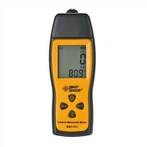Why are night vision devices afraid of bright lights?
Night-vision devices of various kinds, but basically by the optical system, varistor or microtube, power supply and power supply system and other components. Of course, the active infrared night vision device should also be equipped with infrared searchlight, which varistor or microlight is the "heart" of the night vision device. Variable image tube can be invisible infrared image into a visible image, microlight tube can be a weak light to enhance tens of thousands of times or even hundreds of thousands of times, so that the human eye can be perceived.
Night vision devices are afraid of bright light because the varactor tube and the microlight tube are afraid of bright light. Variable image tube, for example, when infrared light irradiated to the variable image tube photocathode, photocathode emission of electrons, electrons in the high-pressure field (16 ~ 21 kV) and the role of the electron lens, accelerated to the fluorescent screen, so that the screen displays a visible image of the target. Transducer receive more light signals, the emission of electrons is more, the fluorescent screen emits a strong light signal, see the image is also bright. They are basically proportional. However, if the external light is too strong, the photocathode emits more electrons to a certain extent does not increase, that is, saturation occurs, it will not see the target. If too strong light suddenly shot over, may also make the tube photoelectric cathode burned out, and can not emit electrons, of course, can not see anything.
Although the night vision device to take certain measures to prevent glare, but its role is limited, so the use must be strictly in accordance with the provisions of the operation. When encountering strong light or daytime target calibration, put the objective lens cover on or switch off the power switch. Correct use of night vision devices can extend its service life and avoid unnecessary damage, thus giving full play to the role of night vision devices.






